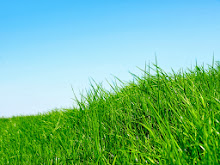Friday, September 4, 2009
Carbohydrates
Carbs are in food items such as soft drinks adn pasta. A part of carbohydrates are monosaccharides, which are simple sugars: glucose, fructose, and galactose. They have the same chemical formula (C6H12O6), but different structural makeups. Such a case is called an isomer. More examples of monosaccaharides are sports drinks(glucose), fruits(fructose), honey(glucose and fructose), "milk sugar"(galactose). When in water, monosaccharides form rings. They are the main fuel for cellular work. Disaccharides are Double sugars and are made by joining two monosaccharides together and taking a water molecule in the process, called condensation. Such as bond is a Glycosidic bond. The common disaccharides are sucrose(table sugar), lactose(milk sugar), and maltose(grain sugar). Sucrose is made of glucose and fructose, maltose is made of two glucose molecules, and lactose is made from galactose and glucose. Getting even bigger, we come to Polysaccharides, or, complex carbs composed of many sugar monomers linked together. They are polymers of monosaccharide chains. Some polysaccharides include starch, glycogen, and previously posted cellulose. Starch(the polysaccharide of plants) serves as the lipids for plants and stores the plant's energy. Potatoes and grains are primary sources of starch for humans. Glycogen (the polysaccharides of animals) is used by animals to store extra sugar, in the form of glycogen. It is similar in structure to starch because they are both made of glucose monomers. For cellulose, see the other post.
Subscribe to:
Post Comments (Atom)





No comments:
Post a Comment